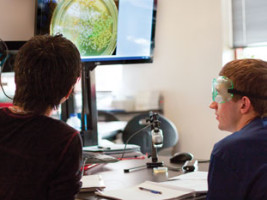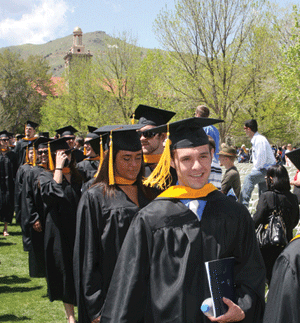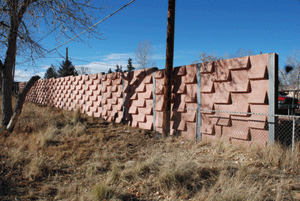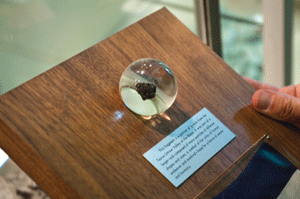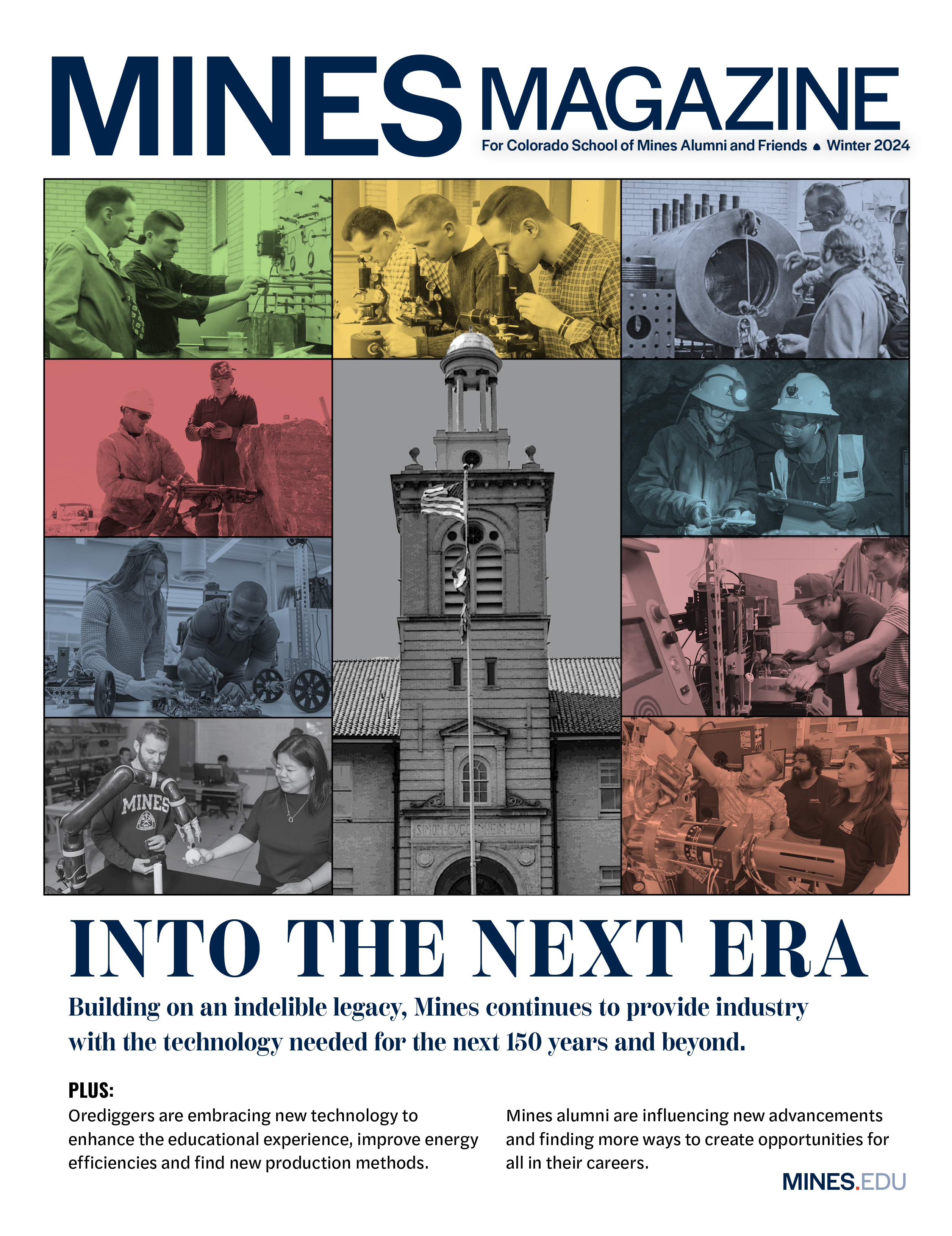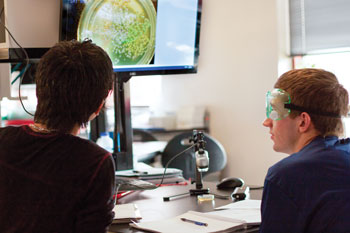
ACTIVE LEARNING: The experiential emphasis of the Department of Chemical and Biological Engineering’s new Studio Biology I course is modeled after some highly successful foundational courses developed by Mines’ physics department.
Successfully manipulating the DNA of bacteria so they fluoresce under ultraviolet light would have rocked the bioscience community a few decades ago. Today, it’s an intriguing, though straightforward, procedure built into an innovative freshman biology course launched this fall at Mines.
During a visit to the laboratory-classroom in October, students were confirming the genetic manipulation had worked. With UV lights and specialized digital cameras trained on petri dishes, their work was plainly visible as constellations of bright dots displayed on numerous workstation computer monitors around the lab.
The Department of Chemical and Biological Engineering’s new Studio Biology I course (soon to be complemented by Studio Biology II) takes lessons from the highly successful studio physics courses pioneered by the Department of Physics over the last decade. Studies conducted at Mines and elsewhere demonstrate that, by requiring students to collaborate in groups on carefully structured experiments and activities, outcomes for retention, critical thinking, problem solving, teamwork and initiative are all improved over conventional teaching approaches.
Teaching Associate Professor Judy Schoonmaker, who has played the lead role in creating the studio biology course and in designing the new lab, explains, “We give students meaningful, real-world problems and ask them to form hypotheses and develop procedures for testing them.”
Earlier in the year, students worked with an enzyme that catalyzes the breakdown of hydrogen peroxide into oxygen and water. The goal was to determine how the reaction was impacted by different environmental factors. Students were challenged to design their own experiments, with occasional prompting from Schoonmaker over the lab’s PA system. “I just offer ideas. ‘What do you suppose happens when you change the concentration of the enzyme’ or the pH or the temperature?'” Schoonmaker explains. “Rather than following instructions by rote from a lab manual, we encourage students to take initiative and share ideas.”
With studies of this instructional model suggesting that social interaction is one of the keys to success, the lab is configured so the 21 workstations, which each accommodate three students, are in close proximity to two other workstations, forming a pod of nine. Groups are encouraged to ask questions, share ideas and compare results with their neighbors.
Workstations are equipped with computers, dual monitors, video microscopes, digital cameras, and digital balances, as well as more specialized equipment like micropipettes and oxygen, pH and temperature sensors. “We have an enviable toolbox,” says Schoonmaker, whose enthusiasm for the new course is infectious. “They’re freshmen and their reaction is, ‘We get to work with this?’ It’s great knowing that after this course they can walk into a research lab and know how to use all this equipment.” That said, she admits the course format takes some getting used to. “They’ve spent the last 13 years being taught to, lectured to, this is a switch.”
Tony Dean, a longtime veteran of the Department of Chemical and Biological Engineering who now heads up the College of Applied Science and Engineering, is excited about the potential impact of the new course, both on the department and the rest of campus. “In addition to strengthening chemical and biological engineering programs, we also envision that Studio Biology I and II can pave the way for the creation of new bio minors in other disciplines,” says Dean. “Students would take these as foundational prerequisites and then move on to specialized coursework in their own departments.”
As Schoonmaker puts it, “If I can demonstrate engineering concepts in the context of biology, such as biomimicry, it becomes much more interesting. This is not a plain biology course ‘it’s a biology course with an engineering backstory.”

